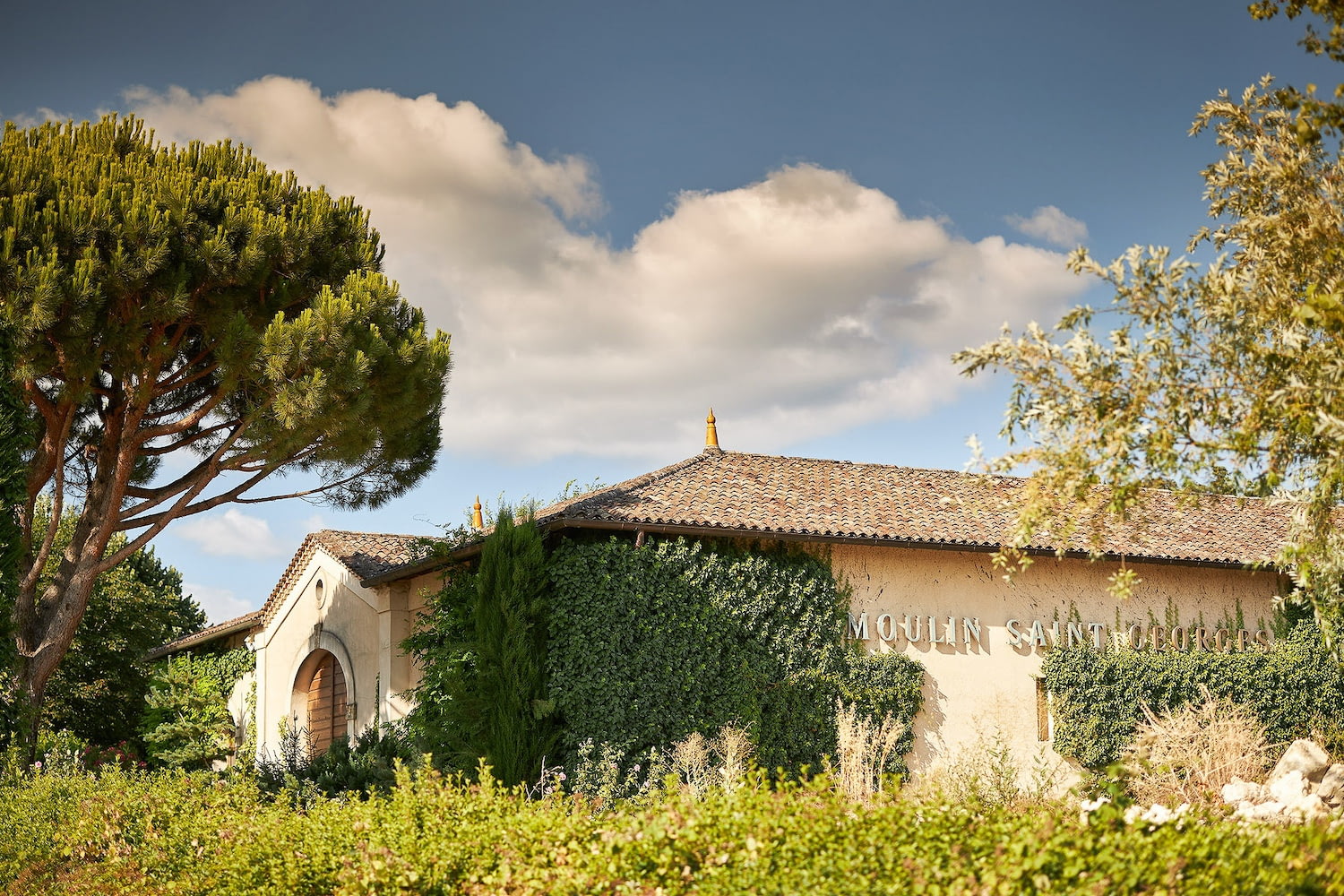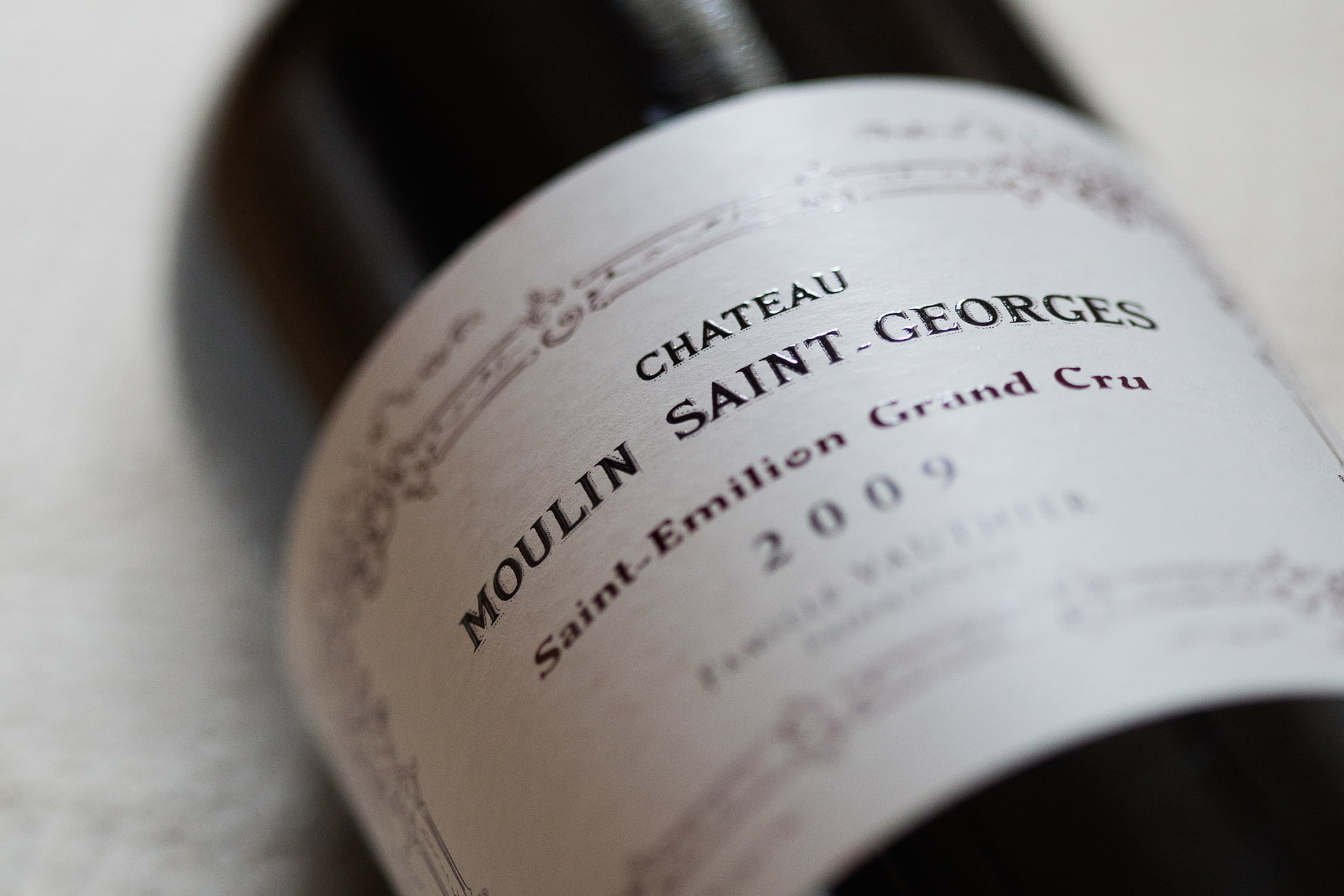November 2024 November 2024

01
On the edge of
harvest date
Should we wait a little longer? Should we get the teams started?
Setting the harvest date is undoubtedly one of the most delicate decisions for us, especially in this year, 2024, when numerous factors come into play in the final equation. We must use good judgment, keep our heads above water, anticipate as much as possible, and also know when to take risks. Weather forecasts (often with little visibility beyond 24 hours) and berry tasting are our two compasses. Meanwhile, lab analysis of the berries serves as a guide for the decisions we are to make during vinification.
As with every vintage, we know the potential harvest date will fall between 40 to 50 days after mid-veraison. At this stage, work in the vineyard slows down until harvest. However, this September 2024, the teams have been very active on the estates to support the grapes’ ripening under the best sanitary conditions. To achieve this, our teams were reinforced to carry out a second precision cluster thinning, a second leaf thinning, and then a second removal of laterals close to the clusters—a meticulous, delicate task. This 2024 vintage has required us, more than ever, to stay alert until the very last moment. The experience accumulated by the teams and their detailed knowledge of each parcel are major assets, allowing us to follow our intuition without rushing.
As the date approaches, we walk the rows every day with Laurent Vallet, the vineyard manager, Edouard, and myself, Constance. Each of us tastes berries from the top, bottom, right, and left of a cluster, then from different spots along the row to get a sense of things. We then discuss our impressions: balance between acidity and sugars, texture, maturity of seeds and skins, and, of course, the aroma. Taste remains our main criterion. The big question we ask ourselves is: “Can we hope for better than what we just tasted?”
Finally, the decision is made collectively. We consider several scenarios based on the weather and the organization of the harvest teams, and then we go for it! The start of the harvest is often set the day before. We’re well aware that this requires major adaptability from the harvest teams. However, we are fortunate to rely on an entire dedicated team, both in the vineyard and in the cellar, who mobilize quickly and effectively, as they have done for many years.
The 2024 harvest began with the Merlots from Château de Fonbel on September 20. The first Cabernet Francs were picked on October 2, and the harvest concluded with the Cabernet Sauvignons on October 6.
02
The Spirit of Ausone by
Constance Vauthier
Can you tell us about your background?
Since childhood, I have always been fascinated by living beings. The turning point came when I met the veterinarian in Saint-Émilion during my studies in agronomy. After five years at the Veterinary School of Maisons-Alfort, where I specialized in equine medicine, I began my career in Normandy and then in Pau. Gradually, the desire to return to Saint-Émilion grew, and I decided to come back to the region as a traveling equine veterinarian. In 2017, the idea of turning to viticulture started to take root and finally materialized in the summer of 2020.
I took the plunge by enrolling in an apprenticeship program at Bordeaux Sciences Agro. At the same time, I joined the family estate, where I took on financial and legal responsibilities while keeping a close eye on the vineyards and R&D projects related to plant material—a passion that has always stayed with me.
How would you define the spirit of Ausone?
The Ausone terroir is a true gem, a magical place that one never tires of. My grandmother already lived there, and despite some renovations, the spirit of the place remains untouched. There’s something magical that emanates from this site. When you reach the top of the small dead-end road leading to the château, a feeling of serenity and calm envelops you. The energy of this place is indescribable, almost magnetic, touching both the vines and the people who work there.

What drives me daily is this quest: how to make the best possible wine, for today and for fifty years from now. Every action matters in this long-term mission.
How are roles distributed within the family today?
It has now been four years since I returned to the family estate, where I work alongside my father, Alain, and my brother, Edouard. Our approach reflects that of a family business, with highly cross-functional roles and multiple responsibilities. However, we each have favourite topics: my brother manages the commercial side, while I handle administrative and technical matters. Our father remains involved, actively sharing his experience with us.
What are the key challenges for your generation, the eleventh since your family settled here in 1690?
Even though our family has been established here for centuries, we must constantly reassess our practices. My father and my sister Pauline have done remarkable technical work to improve the quality of our wines. Passing down this legacy is always a central challenge. However, the greatest issue we face is climate change, which affects all of agriculture.
What do you find most exciting about your daily work on the estate?
Viticulture demands patience and reflection, with only one chance each year to get it right. It’s both frustrating and fascinating. Today, what fascinates me most is the emotion that tasting evokes. Tasting inspires abstract thoughts, while wine production remains firmly grounded in the tangible, the terroir. For me, this connection between the intangible and the tangible is what makes wine so unique. Understanding this link is what drives me.
When I was still a veterinarian, I didn’t always understand certain tasting comments, which sometimes seemed disconnected from the reality of winemaking. But now, I see that it’s precisely when this link between abstraction and reality emerges that everything falls into place. Each vintage takes us back to a specific moment in the past or to a story. On this point, our father has an incredible memory—he can recall the production conditions of each year. What other profession, besides winemaking or farming, makes us so attuned to climate conditions and decisions taken?
What is your vision for the future of the estate?
Switching careers to enter the world of viticulture was one of the best decisions of my life. What drives me daily is this quest: how to make the best possible wine, for today and for fifty years from now. Every action matters in this long-term mission.
03
Château
Moulin Saint-Georges
Facing Château Ausone, it is one of Saint-Émilion's best-kept secrets.
In the Vauthier family since 1921, Château Moulin Saint-Georges is a confidential estate located just steps from the southern entrance of the village of Saint-Émilion. It holds an exceptional position facing Château Ausone and its neighbor Château La Clotte. The Fongaban stream shaped this limestone hillside, explaining the presence of the watermill that once belonged to the Saint-Georges estate.
The Château Moulin Saint-Georges vineyard spans seven hectares, where Merlot reigns supreme alongside a few parcels of Cabernet Franc. On this clay-limestone soil, planting density varies from 5,500 to 12,600 vines per hectare. The wine from this exceptional terroir is the result of intensive soil and vineyard work. After manual harvesting and parcel selection, the juice undergoes traditional fermentation in stainless steel tanks, followed by aging in 100% new oak barrels.
The final blend is typically around 85% Merlot and 15% Cabernet Franc, where power meets freshness, and the charm of Merlot blends beautifully with the depth of Cabernet Franc.
04
The vineyards of the
Vauthier Family
These exceptional wines in the Saint-Émilion appellation are closely linked to Château Ausone and are managed by a single team with the same pursuit of precision.

The family estates reflect the mosaic of terroirs in Saint-Émilion, with a characteristic relief shaped by two geological formations.
1. Vines on the plateau and hillsides with terraces
Château Ausone and its second wine, Chapelle d'Ausone
2. Vines at the foot of the hills
"The search for balance is one of the key challenges on the terroir of Château Simard. This constant process of reflection is crucial to achieving the best result while keeping the wine accessible in both taste and price. While nothing is predetermined, every action is tailored to the soils and microclimates of each parcel. The winemaker's hand is simply there to maintain this balance."
— Constance Vauthier













